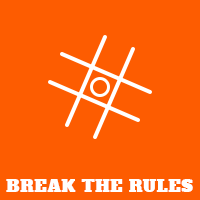Innovation – What is it?
This is the first post in our #Innovation series. Check out our other posts on refreshing your thinking for an innovative mindset, and generating creative concepts.
We’ve been lucky enough to attend creative thinking workshops led by the fantastic Lou Palfreyman. Her sessions offered great insight into the repetitive patterns we often fall into when trying to innovate, and Lou has given us plenty of useful advice on how to spot these patterns, break free from their influence, and start truly innovating. We’ll unpack some of these patterns and impart some of our newfound wisdom to you in blog posts over the next few weeks, but for starters, let’s take a look at the word innovation and what it really means.
Creativity vs Innovation
We often think of creativity and innovation as synonyms, but they’re subtly different, and that subtle difference is very important. Creativity can take many forms and can go in any conceivable (or inconceivable!) direction. Innovation is the harnessing of creativity to achieve a goal. That goal might be finding a solution to a specific problem, or brainstorming to come up with a new direction for your business. No matter which of these is the case for you, bear in mind that true innovation has direction and purpose.
That said, don’t let your objectives confine your thinking. When you sit down on your own or with your team with the intention of coming up with the next big marketing campaign, it’s not uncommon for creativity to take you in all sorts of weird and wonderful directions. This is to be encouraged! Let your imagination run wild. Innovation will come when you take all those creative ideas and focus them towards a goal.
Types of innovation
There are three commonly recognised types of innovation. The first is incremental innovation. This is exactly what it sounds like: taking something that already exists and building on it. Food producers coming up with new crisp flavours, car manufacturers producing ever-faster models, and vacuum developers creating more powerful vacuums would all fall into this category. It’s useful innovation, and the most common type, but it’s hardly likely to shake up your industry.
Next up is disruptive innovation. This is innovation that has a wider impact, and we’ve seen a lot of great examples over the last few years. The advent of apps saw major disruption to the hotel industry thanks to the creation of AirBnB. Brands like Uber, Just Eat, and Deliveroo have all been similarly disruptive in their industries. These on-demand apps have rapidly become the new normal, forcing competitors to adapt, disrupt, or die.
Finally, we have breakthrough innovation. This is innovation that doesn’t just reinvigorate an industry, but potentially changes the world. The internal combustion engine, vaccination, and the internet were all revolutionary around the world. More recent examples include 3D printing, lab-grown meat, and virtual reality, all of which are going to impact the world in major ways in the next five to ten years. We’d all love to innovate in this category. It’s the rarest kind of innovation, but someone has to do it, and why shouldn’t it be you?
Where innovation happens
When we think of innovation, most of us think of products and services that affect our daily lives. As businesses, we usually think about how to improve our offering and provide more value to our customers, but there are many more areas where innovation can occur. We can sort these into three main categories: internal, product, and external.
Internal innovation might not be quite as flashy as inventing a new product or service, but it’s just as useful. Consider ways you can change your internal structure or processes, ways you can change your profit model, or the way you network. Does your company need to be split into the departments you currently have? Could it work better if you used a flat structure and assigned people to projects based on their specific skill sets? Would a subscription service offer better value than an upfront-cost model? Innovations in these areas can still be game changing. Look at how LinkedIn changed the world of business to business networking.
Product innovation is what people tend to think of when asked to think about innovation. This is where you look at your industry and audience to identify gaps, then aim to fill those gaps with new products. Would the cereal you produce be even better if it included nuts? Is it time for another three-wheeled car?
External innovation relates to brand, service, channel, and customer engagement. Does your brand identity follow the rest of your industry too closely? If your industry is full of market-specific jargon, might there be a place for a more straight-talking brand? Could you communicate with your customers in a new and exciting way? Could you offer product training through virtual reality?
There are many more ways to innovate than most people consider. Think bigger than just product and service.
Break the rules
While we’ve broken down innovation into several different types, and told you that you can innovate in several different areas, we’ve only done this to make the topic easily digestible. There’s no rule saying your innovation must fall into only one of these categories, or even that you need to consider these categories when having a creative brainstorming session. Mixing and matching innovation in different areas can lead to yet more innovation, and we’d encourage to you experiment. Be playful, this is the fun part.
Innovation is in the eye of the beholder
Finally, let’s take a moment to address one of the traps many companies fall into: claiming to innovate when what they really mean is “catch up with the rest of the industry”. It’s important to recognise that not everything you or your company thinks of as innovative will appear that way to your audience. Launching an augmented reality app to let customers see your product in their own homes might be an new idea within your company, but if half of your competitors have apps that do the same, your customers won’t see it as anything new.
When you’re investing in innovation, be sure you don’t just end up imitating in an attempt to catch up to an industry standard. Aim to create something that surpasses what’s already out there, or, better yet, something unlike anything else. Do your research, look at what’s working for others, then chuck out the rules, start fresh with a blank piece of paper, and let your imagination run wild.
What next?
Saying this is all very well, but a blank sheet of paper can be as daunting as it is liberating. Thankfully, Lou taught us a few tips and tricks for getting those creative juices flowing, and we’ll be sharing these techniques – along with some of our own – on the blog over the next few weeks. If you can’t wait, feel free to get in touch.






